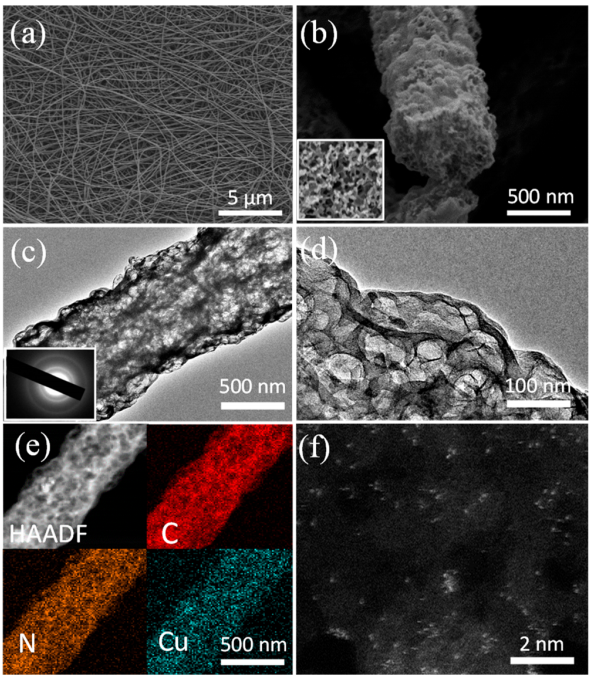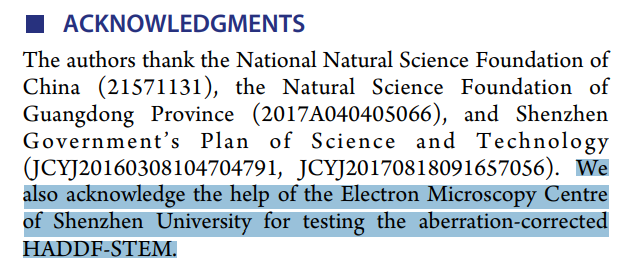中心助力我校在《JACS》发表论文阅读次数 [1409] 发布时间 :2019-10-11 16:13:48
基于电镜中心(EMC)FEI电镜数据,深圳大学化学与环境工程学院用户在JCR1区期刊Journal of the American Chemical Societys上发表论文,摘要如下:
Scalable Production of Efficient Single-Atom Copper Decorated Carbon Membranes for CO2 Electroreduction to Methanol
Hengpan Yang,†,§ Yu Wu,‡,§ Guodong Li,‡ Qing Lin,† Qi Hu,† Qianling Zhang,† Jianhong Liu,†
and Chuanxin He*
† Shenzhen Key Laboratory for Functional Polymer, College of Chemistry and Environmental Engineering, Shenzhen University, Shenzhen, Guangdong 518060, China ‡ Hefei National Laboratory for Physical Sciences at the Microscale, Department of Chemical Physics, University of Science and Technology of China, Hefei, Anhui 230026, China
Electrocatalytic reduction reaction of CO2 (CO2RR) is an effective way to mitigate energy and environmental issues. However, very limited catalysts are capable of converting CO2 resources into high-value products such as hydrocarbons or alcohols. Herein, we first propose a facile strategy for the large-scale synthesis of isolated Cu decorated through-hole carbon nanofibers (CuSAs/TCNFs). This CuSAs/TCNFs membrane has excellent mechanical properties and can be directly used as cathode for CO2RR, which could generate nearly pure methanol with 44% Faradaic efficiency in liquid phase. The self-supporting and through-hole structure of CuSAs/TCNFs greatly reduces the embedded metal atoms and produces abundant efficient Cu single atoms, which could actually participate in CO2RR, eventually causing −93 mA cm−2 partial current density for C1 products and more than 50 h stability in aqueous solution. According to DFT calculations, Cu single atoms possess a relatively higher binding energy for *CO intermediate. Therefore, *CO could be further reduced to products like methanol, instead of being easily released from the catalyst surface as CO product. This report may benefit the design of efficient and high-yield single-atom catalysts for other electrocatalytic reactions.


